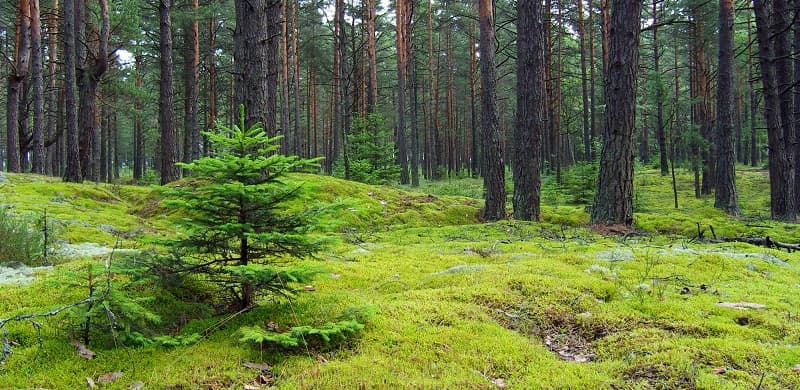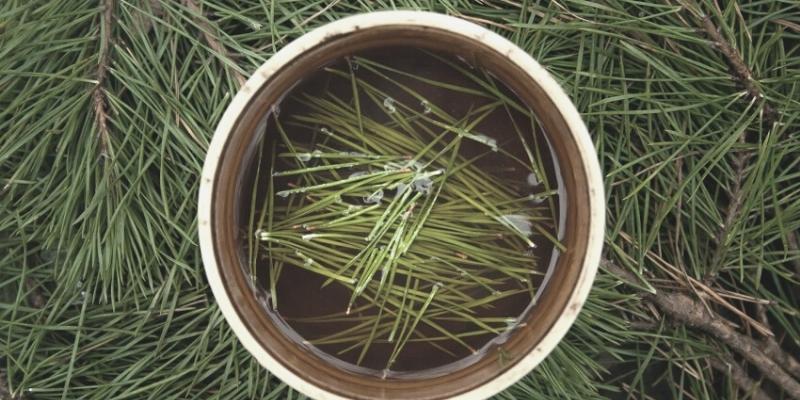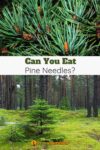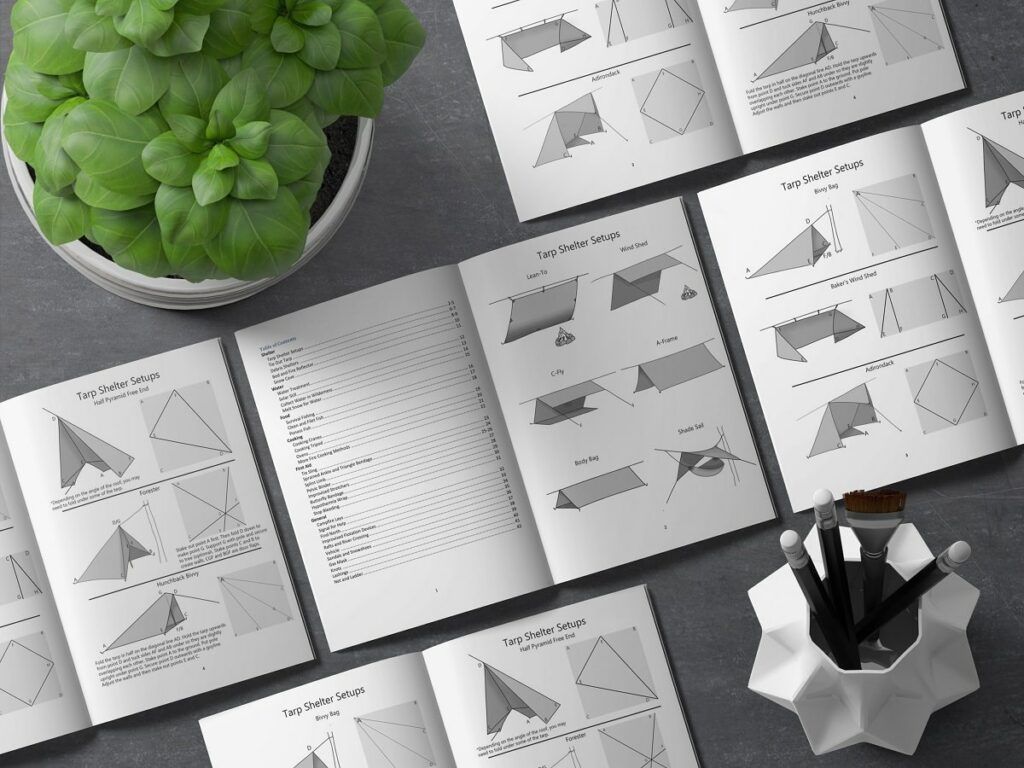Pine trees are one of nature’s gifts to preppers. Almost every part of the tree can be used in a survival situation, from using the sap to make a lamp, waterproofing buckets with pine pitch, or adding pine nuts to your evening meal.
What about pine needles? Their spiky appearance may put you off collecting them, let alone eating them. But not only are pine needles edible, they’re one of nature’s superfoods.
Read on to find out everything you need to know about collecting and eating pine needles.
Why You Should Eat Pine Needles
When you’re living in the wilderness for a long time, you need to make sure your diet contains the vitamins and minerals your body needs. Even if you have a supply of emergency food, freeze-dried meals often don’t contain much in the way of nutrients.
One of the most essential nutrients is vitamin C, which is needed for the growth and repair of all body tissues. If you live in a hot climate, you can get this vitamin from oranges or lemons, but in cooler climates, that’s not an option.
Pine needles are a great natural source of vitamin C, and pine needle tea has been used for centuries to prevent scurvy. They also contain vitamin A (good for your eyesight and skin) and antioxidants.
Pine is also thought to have medicinal properties and is used in traditional remedies for colds, cough medicines, UTIs, sinus infections, and as a topical treatment for skin infections and arthritis.
One thing to be aware of is that pine needles are diuretic. If you’re dehydrated or have a medical condition, that means you should avoid diuretics then consume with care!
When to Harvest Pine Needles

As pine trees are coniferous, you can collect pine needles all year round. This is especially beneficial in winter when there are fewer natural sources of vitamin C available.
However, the young shoots of conifers have the mildest flavor and taste less resinous than older needles. To harvest, look for the light-colored tips of the trees in spring. Never snip off the new growth at the top of young trees, as this may stunt their growth.
Once picked, pine needles will keep for about a week in the fridge, or you can freeze them for up to a year.
Pine Needle Recipes
There are a couple of ways you can get the benefits of eating pine needles depending on what equipment and other ingredients you have to hand.
Pine needle tea is the most common way of extracting the nutrients from pine needles, but there are plenty of recipes that incorporate the distinctive citrus, resinous flavor of pine:
- If you’re not a fan of hot drinks, this pine needle and raspberry soda is a refreshing choice for summer.
- Incorporate them into baking, as with these Christmas-themed pine needle shortbread cookies.
- Pine needle syrup is easy to make and can be used as a glaze for meat or consumed as a cough syrup. This recipe uses sugar, or for added medicinal benefits, you can make it with raw honey.
- Dry the needles, then infuse them in oil which can be used for a salad dressing or to drizzle on pasta or pizza.
- This recipe for Douglas fir infused eggnog sounds intriguing and tasty!
You can even eat pine needles raw, though we’d recommend using the young shoots, which tend to be softer. Finely chop them before adding them to your meal.
If you’re desperate, then simply chewing on raw needles is likely to release some of the vitamin C even if you spit the needles out rather than swallowing them.
How to Make Pine Needle Tea

Pine needle tea has a surprisingly pleasant taste. Here’s how to make it:
- Snip or strip the needles off the branch and roughly chop.
- Add the needles to a cup of boiling water, cover, and let them seep. Don’t boil the water with the needles added, as this destroys vitamin C.
- Once the tea has cooled enough to drink and the water’s turned a lemon-green color, strain the needles out and drink up!
If you have a sweet tooth, you may want to add a little honey to your pine needle tea. You can also add a refreshing dash of lemon.
Read here for a more in-depth look at making pine needle tea.
Which Pine Needles Are Toxic
All pine trees, spruces and firs have edible needles. They often have different flavors, so it’s worth trying other species of conifers to see which you prefer.
Yew trees aren’t technically pine trees, but they look similar and could be confusing if you don’t know what you’re looking for. Yew tree needles are poisonous, so you need to make sure you’ve got the right tree before brewing your tea!
Other species, such as Ponderosa Pines, are toxic to cattle and can cause cows to miscarry. Although there’s not much scientific evidence for the impact on humans, if you’re pregnant, then it’s best to stay safe and give pine needle tea a miss.
What Other Parts of a Pine Tree Can You Eat?
The needles aren’t the only edible part of a pine tree. You can also eat:
- Pine nuts – the seeds of the pine tree are the tastiest and most nutritious part to eat. You can forage them in August and September, and the nuts are an excellent source of protein, fat, and essential micronutrients. Find out how to harvest pine nuts in the wild.
- Pine pollen – yellow pine pollen can be harvested in spring and is a great source of protein. You can use it as a thickener in stews or even add it to flour to make bread or pasta!
- Pine bark – tree bark may not be an obvious food source, but the inner bark of pine trees delivers carbohydrates, vitamins, and fiber. Find out more about pine bark and when to harvest it.
- Pine cones – the hard shells of mature pine cones might not be very appealing, but the young, green cones are a different matter. They are thought to have medicinal properties and can be used to make jam, tea, or tinctures. Find out more about eating pine cones and how to make pine cone jam.



Yew tree is poisonous…don’t mistake as being a pine.
Hi, I live near a pine plantation in Yanchep, Western Australia. The pines are Maritime pine – is this a safe pine to use – needles and bark? Thank you Cheers Leesa
Yes, all pine needles are safe.
I live in NZ we have pine trees that have three not five needles in a cluster I’m finding it hard to research if this is a safe pine tree to make tea from. Any advice would help.
You’ll need to find out the exact species. Try calling people from the botany departments of local universities or anyone else involved in botany.